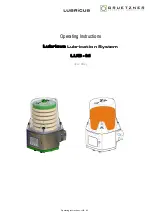
Chapter 9
Isolation and Digital Isolators on USB-6215/6216/6218 Devices
©
National Instruments Corporation
9-2
The non-isolated gro
u
nd is connected to the chassis gro
u
nd of the PC.
Each isolated gro
u
nd is
not
connected to the chassis gro
u
nd of the PC.
The isolated gro
u
nd can be at a higher or lower voltage relative to the
non-isolated gro
u
nd. All analog meas
u
rements are made relative to the
isolated gro
u
nd signal.
The isolated gro
u
nd is an inp
u
t to the USB-6215/6216/6218 device. The
u
ser
must
connect this gro
u
nd to the gro
u
nd of system being meas
u
red or
controlled. For more information, refer to the following:
•
The
Connecting Analog Input Signals on USB-6215/6216/6218
section of Chapter 4,
•
The
Connecting Analog Output Signals
•
The
Connecting Digital I/O Signals on USB-6210/6211/6215/6218
Connecting Digital I/O Signals on USB-6212/6216 Devices
section of Chapter 6,
•
The
Digital Isolation
USB-6215/6216/6218 devices
u
se digital isolators. Unlike analog isolators,
digital isolators do not introd
u
ce any analog error in the meas
u
rements
taken by the device. The A/D converter,
u
sed for analog inp
u
t, is on the
isolated side of the device. The analog inp
u
ts are digitized before they are
sent across the isolation barrier. Similarly, the D/A converters,
u
sed for
analog o
u
tp
u
t, are on the isolated side of the device.
Benefits of an Isolated DAQ Device
With isolation, engineers can safely meas
u
re a small signal in the presence
of a large common-mode voltage signal. Some advantages of isolation are
as follows:
•
Improved Rejection
—Isolation increases the ability of the
meas
u
rement system to reject common-mode voltages.
Common-mode voltage is the signal that is present or “common” to
both the positive and negative inp
u
t of a meas
u
rement device, b
u
t is
not part of the signal to be meas
u
red.
•
Improved Accuracy
—Isolation improves meas
u
rement acc
u
racy by
physically preventing gro
u
nd loops. Gro
u
nd loops, a common so
u
rce
















































